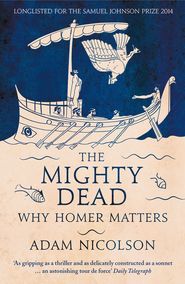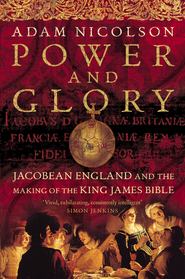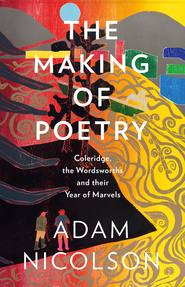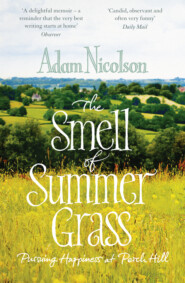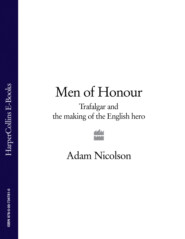По всем вопросам обращайтесь на: info@litportal.ru
(©) 2003-2024.
✖
The Gentry: Stories of the English
Автор
Год написания книги
2019
Настройки чтения
Размер шрифта
Высота строк
Поля
That war and its causes have loomed large in all modern discussions of the gentry. The brilliant and vituperative academic debate between a group of largely Oxford historians in the mid-twentieth century left the gentry itself a bruised battlefield, littered with the corpses of competing theories. Every one of those theories was hamstrung by the difficulty of identifying watertight socioeconomic groups which could be seen to be acting in singular and coherent ways. Any examined group tended to fragment into its individuals and to blur all possible definitions. In the aftermath of ‘The Storm over the Gentry’, historians have retreated from large-scale theorizing towards closer descriptions of individual families, the net of allegiances in the gentry world, the county communities, and the non-ideological and self-protective nature of much of gentry life. That is certainly the picture that emerges from the families which carry the seventeenth-century story here: one family, the Oxindens, spread across many social layers; another, the Oglanders, strongly constitutionalist but reluctantly needing to support the King; another, the le Neves, divided between its urban-mercantile connections and its rural-Tory inclinations; some, the Hobarts, Puritan-Parliamentary, in pursuit of power; others, the Gawdys, disengaged from the questions of politics, pursuing bluntly conservative lives.
It is certainly possible to be sidetracked by the glamour and tragedy of that war. Much of gentry life continued past and through it largely as if it had not happened. At the end of it, and at the Restoration of the crown in 1660, the gentry as a group were in pretty much the same economic and political position as they had been before, owning the same proportion of the country and as deeply engaged in parliamentary government as they had been a hundred years earlier. The revolution of 1688, when they expelled the last Stuart, a despised Roman Catholic, and brought in a satisfactorily Protestant Dutchman, William III, seemed like the apogee of their power. Government would be constitutional and the landowning class would control it.
But this triumph contained the seeds of its own decline. The end of the seventeenth century was difficult. The weather, which had also been atrocious in the 1640s, entered a bleak spell in the 1690s with a series of pitiably poor, starvation harvests. Revenues and rents from land began to be depressed. The growth in population slowed. On top of that, the new government that had come in with the Dutch William III was now militarizing fast. Between 1689 and 1714, the Royal Navy became the biggest in Europe. In 1692 a land tax was imposed at four shillings in the pound, a 20 per cent tax on gentry incomes. A government which had looked as if would be the embodiment of landholding England became instead the government of a combination of the Whig aristocrats, the commercial interests of the City of London and its growing Atlantic empire.
In the century to come, which would belong to the merchants and the great Whig oligarchs, the nature of the gentry began to divide into an old Tory world view and a new Whig one. If there is a hinge in gentry history, this is it. The Tory squires of the 1690s belonged to a world that was palpably continuous with the thought patterns of Sir William Plumpton and the old Throckmortons. After them, gentry culture conceived of itself, at least in part, as something that was out of kilter with modernity. That was one of the things the duel between Oliver le Neve and Sir Henry Hobart on Cawston Heath was about.
The squire was starting to become yesterday’s story. His belief in inherited virtue, in the whole idea of transmission from a semi-feudal past, was looking fragile in the face of the new ideas of educated virtue, of virtue to be acquired not by inheritance but by learning and good behaviour. ‘A man of polite imagination’, Joseph Addison wrote in the Spectator, enjoyed ‘a kind of property in everything he sees.’
That is not what the landowners of Norfolk would have thought. They knew all about property but, for these voluble and scarcely polished squires, learning was something of a foreign country. It is true that Oliver le Neve owned a copy of John Locke’s Essay Concerning Human Understanding, but it was a rare flower amidst a bookshelf filled with Peppa – A Novel, Muse’s Farewell to Popery, Britain’s Glory, Ladies’ Travels into Spain and The New Art of Brewing.
The squire was becoming a slightly laughable figure. The man of honour was slipping into the lovable, old-fashioned, uneducated Tory, who could not quite keep up with the badinage of the coffee house or the London club and who remained happily unaware that everyone around him was laughing at his accent, his clothes, his wig, his ideas, his whole marinaded, antiquated roast-beef self and his obsession with hunting and shooting.
Why so much about hunting? In part, it was inherited behaviour. The hunt was gentry communality, jointness, what they did, who they were, the sort of thing they had always been. As that, it was also an act of dominance, of lordliness, ownership, nostalgia, control and removal from the world of an earned living. It was a form of play-warfare in which the enemy was absent. It was also a stimulus to the blood, a source of adrenaline, the seventeenth-century substitute for a skiing holiday, an escape from the house, from the wifely ‘bridle’ – a term le Neve’s friends use – and the stir-craziness of being too long at home. ‘I am longing much for a little libberty,’ Sir Bassingbourne Gawdy confided to his brother-in-law le Neve in February 1698, when his father had been ill, ‘for I have bin A Prisoner this thre weeks or more.’
I wonder if there wasn’t something else in play here too. These Tory squires, knowingly or not, were on a downward trend. The focus of value in England was moving away from land and land ownership towards an increasingly dynamic and urban market. The last decade in which any part of England remained self-sufficient and did not grow crops for sale, or derive its food from elsewhere, was the 1680s. The medieval vision of integrated, rural communities, each a ‘little commonwealth’ as the great Jacobean surveyor John Norden had called a manor, was now over.
Throughout the seventeenth century rural rents had been dropping; London property was increasingly valuable.
But the world of hunting was the squire’s province. You could dragoon and whip a pack of beagles in a way that the electors of Norfolk would never allow. You could live a fantasy life when out with your friends all day on horseback in a kind of toy theatre and as a nostalgic dream of significance. When your credit (financial or otherwise) was looking thin or your tenants found it difficult to pay their rents, it may have been the only consolation there was.
1610s–1650s
Steadiness
The Oglanders
Nunwell, Isle of Wight
Sir John Oglander was in love with his own life: with his vision of the past and his long line of ancestors stretching back into it; with his own role as the guardian of his family’s wellbeing in the troubled seventeenth century and on into ‘futor Adges’; and with Nunwell, the Oglander house and lands at the eastern end of the Isle of Wight, the matrix of his being, to whose health and happiness he dedicated year after year.
His deep attachment to Nunwell and the Isle of Wight is intriguing because although he was born here in 1585, the family left in 1588, after his mother had been frightened by the sight of the Spanish Armada sailing up the Channel.
They kept the property but went to live on the mainland, settling on land they owned in Sussex. Only in 1609, when his father died and John was twenty-four, did he return to the Isle of Wight. This late return to a place John Oglander thought of as home may be at the root of his passionate attachment to Nunwell.
He is more knowable than anyone in these stories, largely because of his extraordinary notebooks, his ‘Bookes of Accoumpts’, the surviving leather-bound volumes written between 1620 and 1648, which have been treasured by the Oglander family ever since.
At heart they are no more than a steady calculation, quarter by quarter, of what he spent and what he owed, what he lent and what was owed to him, what income he could expect and what, in total, he was worth. But he was too active and too curious to stick merely to figures and over the years the notebooks gradually filled with all the multifarious contents of his mind. The result was a real-time depiction of a man’s life and priorities, a portrait of a member of the seventeenth-century gentry alive in that moment, jumping from one subject to another, from one pre-occupation to the next, from memories to plans, regrets to delights, enemies to friends, events to principles.
Вы ознакомились с фрагментом книги.
Приобретайте полный текст книги у нашего партнера:
Приобретайте полный текст книги у нашего партнера:
Другие электронные книги автора Adam Nicolson
Sea Room




 0
0






